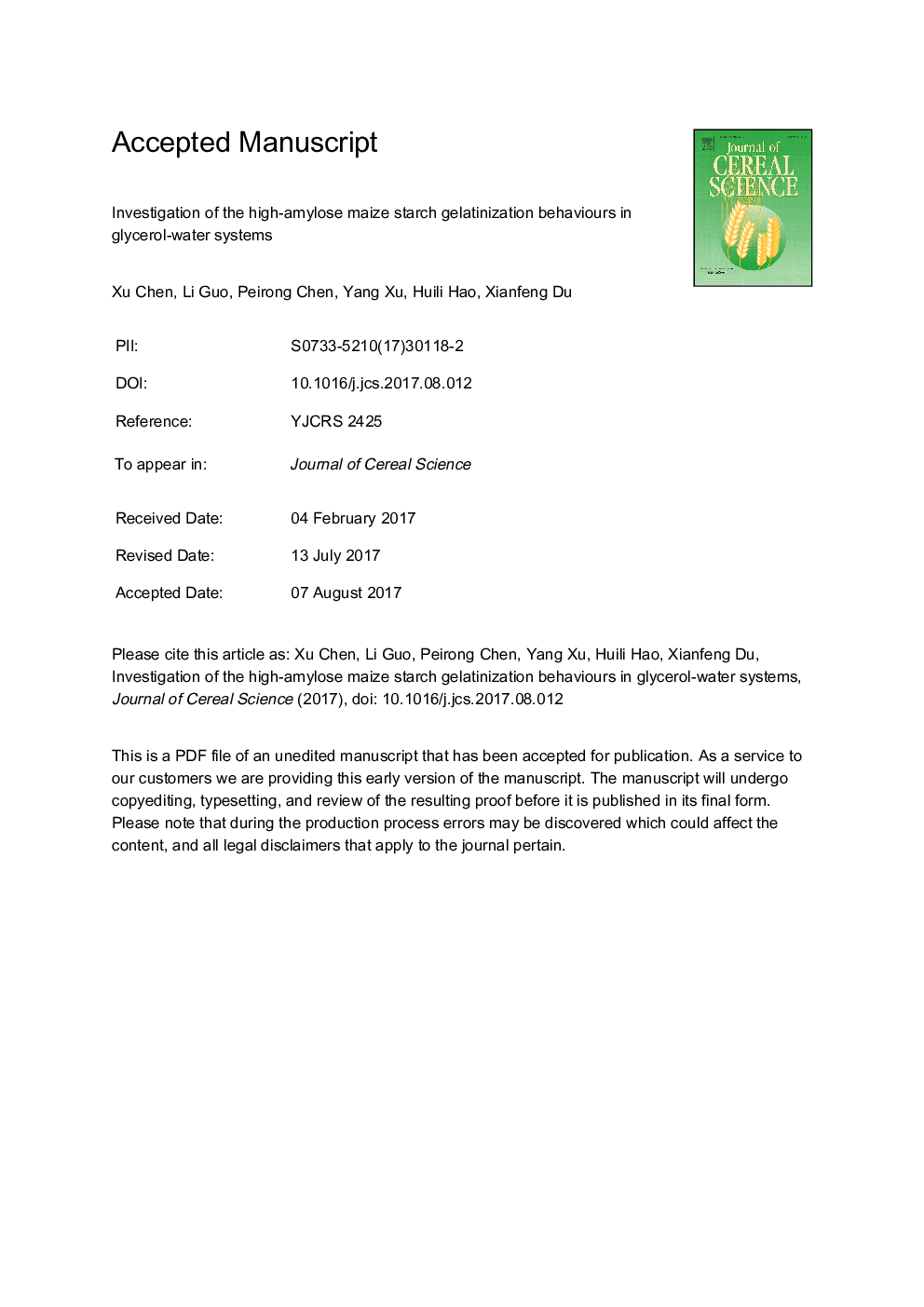| Article ID | Journal | Published Year | Pages | File Type |
|---|---|---|---|---|
| 5762412 | Journal of Cereal Science | 2017 | 14 Pages |
Abstract
The effect of glycerol on gelatinization behaviours of high-amylose maize starch was evaluated by confocal laser scanning microscopy (CLSM), scanning electronic microscope (SEM), differential scanning calorimetry (DSC), texture analyzer (TPA) and rheometer. Gelatinization of the high-amylose maize starches with glycerol content of 10% (w/w) began at 95.4 °C (To), peaked at 110.3 °C (Tp), and completed at 118.9 °C (Tc). The birefringence began to disappear at around 100 °C and finished at 120 °C which corresponded well to the onset and conclusion temperatures obtained by DSC. The high-amylose maize starch granules maintained original morphological structure at 100 °C and swelled to a great degree at 110 °C. The high-amylose maize starch paste formed at 100 °C showed the lowest hardness (39.92 g), while at 120 and 130 °C, showed the highest hardness (610.89 g and 635.43 g, respectively). It should be noted that in going from 100 °C to 110 °C there is a significant increase in the viscosity of the slurry solution. The identical apparent viscosity was observed when the shear rate exceed 100 sâ1, resulting from the high-amylose maize starch granules were completely gelatinized at 120 °C, which was consistent with DSC analysis.
Related Topics
Life Sciences
Agricultural and Biological Sciences
Agronomy and Crop Science
Authors
Xu Chen, Li Guo, Peirong Chen, Yang Xu, Huili Hao, Xianfeng Du,
